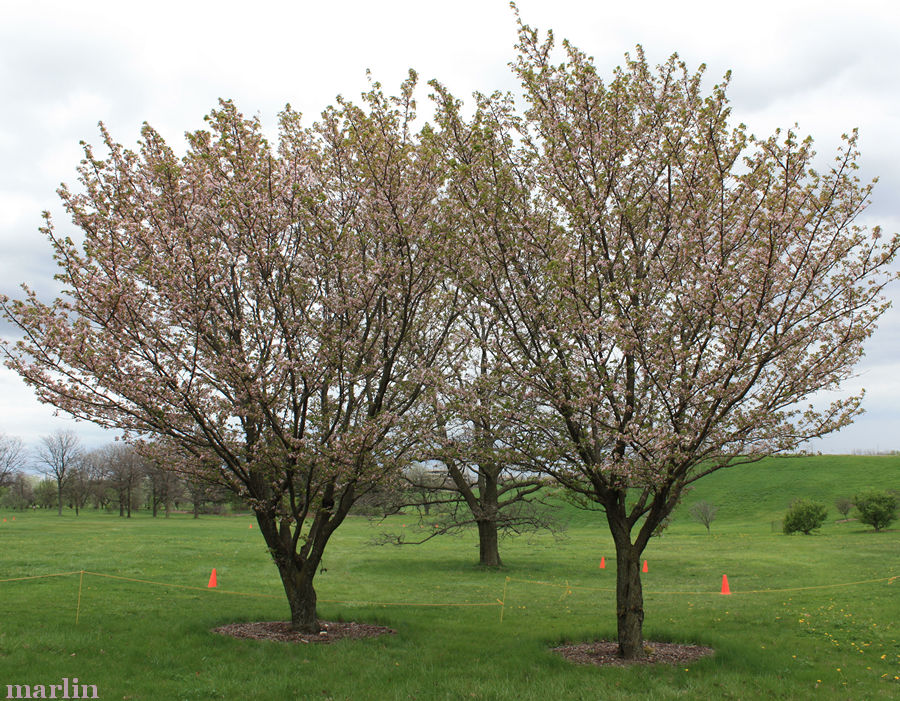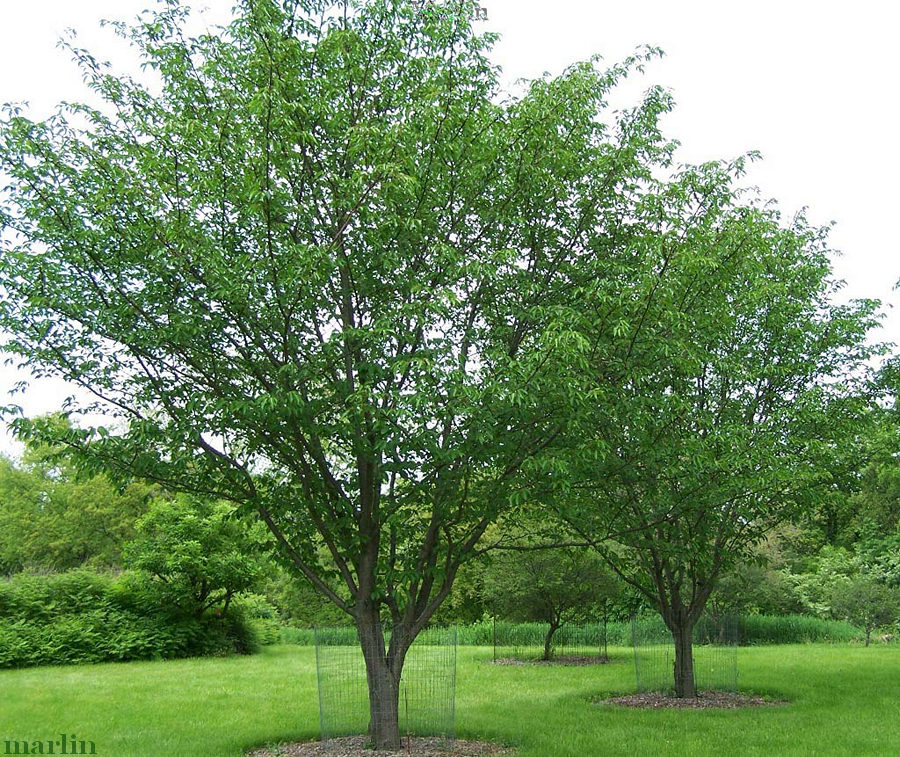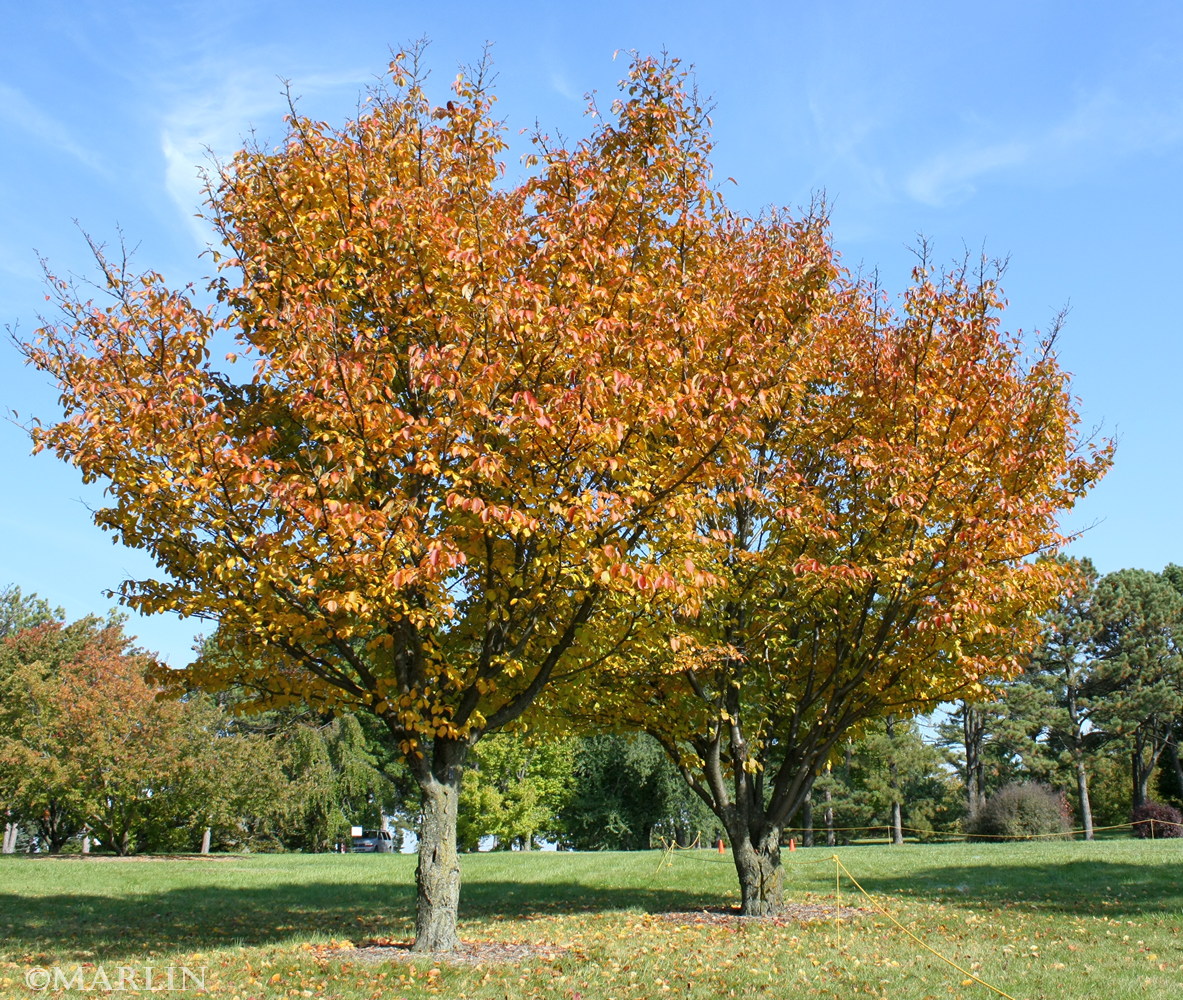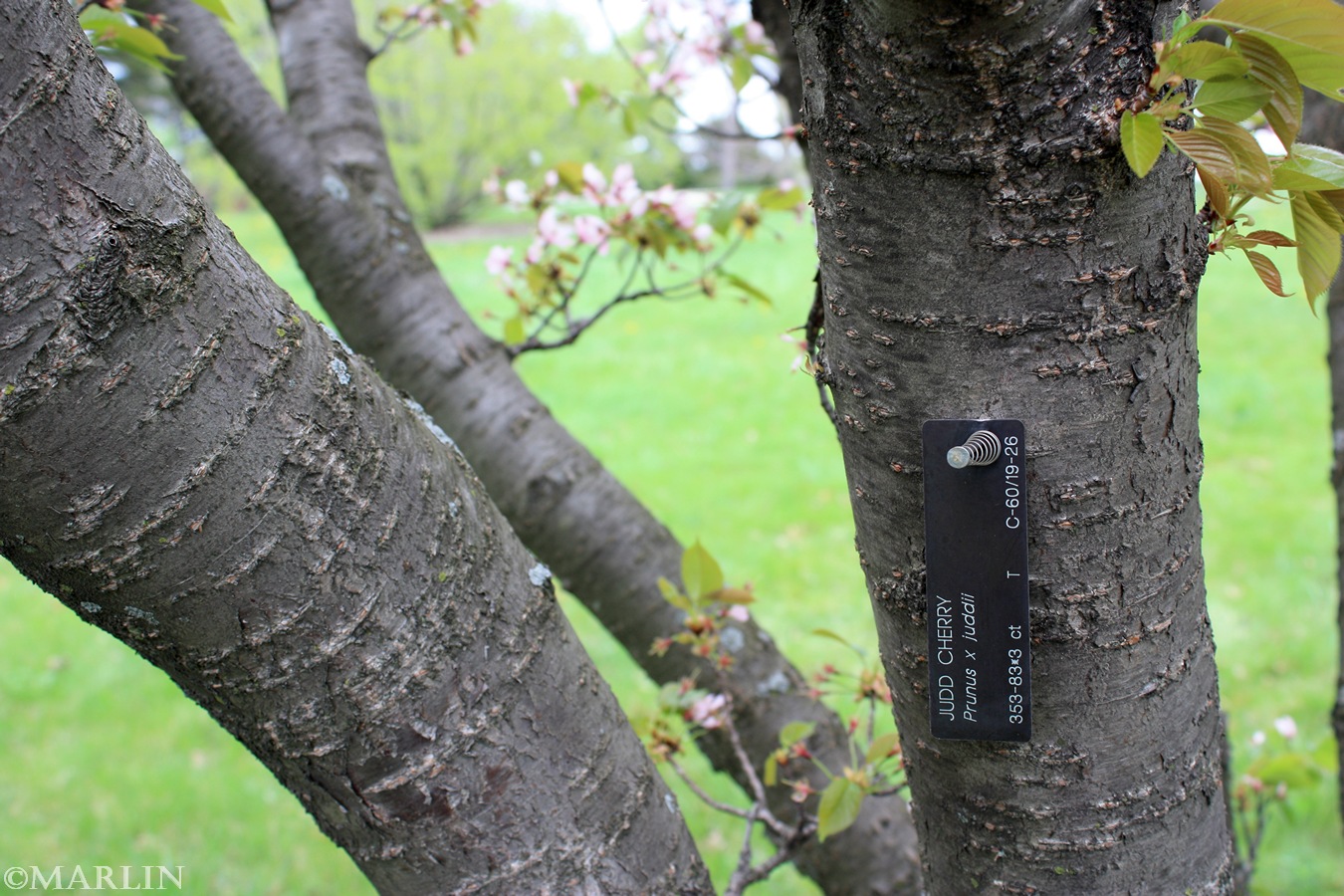Judd Cherry Tree – Prunus x juddii
The United States is one of the leading producers of sweet cherries in the world. In 2000 the U.S. was second in overall production worldwide with 203,000 metric tons of cherries with Iran leading the way with 229,000 tons. Germany was fifth with 133,000 tons, behind Turkey and Italy.
In the U.S. the majority of cherries are produced in the Pacific Coast states of Washington, Oregon and California with the greatest volume of production in the north. The five year average, ending in 2000 shows Washington averaging 86,000 metric tons, Oregon a distant second at 50,000 tons and California at 36,000 tons. The only other significant cherry production region in the United States is Michigan in the north-central region with 18,000 tons, most of which is grown for the processing market. [3]

Cherry flowers are white, solitary, and borne in umbel-like racemes. The flowers are perfect and are insect pollinated. Several species of flies, a flower beetle, and several species of bees, including the honey bee, work the blossoms for pollen and nectar. Self-pollination has been observed, but none of the self-pollinated flowers developed into viable seeds.
 These outstanding Judd cherry trees are 13 years old
These outstanding Judd cherry trees are 13 years old
Late spring frosts may damage the flowers before they open, and frosts occasionally cause large numbers of newly set fruits to fall from the pedicels without maturing. Premature dropping of green fruits is also a problem in some years. The fruit is a one-seeded drupe about 10 min (0.38 in) in diameter with a bony stone or pit. The fruit is black when ripe.
The bulk of the seed crop falls to the ground in the vicinity of the parent tree. Circles of advance seedlings beneath scattered cherry trees and an absence of seedlings elsewhere are common occurrences in closed stands. As a result, the amount of black cherry advance reproduction is highly dependent on the number and distribution of seed-producing trees in the overstory. Songbirds distribute modest quantities of seeds in their droppings or by regurgitation. Omnivorous mammals, such as foxes and bears, also distribute seeds in their droppings. Bird and mammal distribution often accounts for a surprising abundance of advance cherry seedlings in stands lacking cherry seed producers.
The root system of most cherries are predominantly spreading and shallow, even in well-drained soils. Most roots are restricted to the upper 60 cm (24 in) of soil or less, with occasional sinker roots extending to depths of 90 to 120 cm (36 to 48 in). On wet sites, the tendency toward shallow rooting is especially pronounced. Because of this tendency to grow taller than associated species in mixed stands, cherry is vulnerable to windthrow, especially on poorly drained soils and at older ages.
The most important defoliating insects attacking cherry trees include the eastern tent caterpillar (Malacosoma americanum) and the cherry scallop shell moth (Hydria prunivorata). Infestations of these insects are sporadically heavy, with some apparent growth loss and occasional mortality if heavy defoliations occur several years in a row.
Attacks by numerous species of insects cause gum defects in cherry, resulting in reduced timber quality. Gum spots in the wood are often associated with the Agromyzid cambium miner (Phytobia pruni), the peach bark beetle (Phloeotribus liminaris), and by the lesser peachtree borer (Synathedon pictipes). A wide variety of insects can cause injury to terminal shoots of black cherry seedlings and saplings, resulting in stem deformity. Archips spp. and Contarinia cerasiserotinae are among the more important.
The most common disease is cherry leaf spot caused by Coccomyces lutescens. Large numbers of black cherry seedlings are sometimes weakened or killed by this disease. Repeated attacks reduce the vigor of larger trees. Most other foliage diseases cause little damage.
Black knot, a native disease caused by the fungus Apiosporina morbosa is common on cherry. It causes elongated rough black swellings several times the diameter of the normal stem. Small twigs may be killed within a year after infection. Large cankerous swellings, a foot or more in length, may occur on the trunks of larger trees, and where several such lesions are scattered along the bole, the tree is worthless for lumber. Cytospora leucostoma is the cause of a canker disease responsible for widespread branch mortality of black cherry in Pennsylvania. Common infection courts are decaying fruit racemes and bark fissures caused by excessive gum production following passage of the larvae of Phytobia pruni, a cambium mining insect.
References
- USDA, ARS, National Genetic Resources Program, (GRIN) Prunus buergeriana
- USDA, ARS, National Genetic Resources Program, (GRIN) Prunus —juddii E. S. Anderson
- Lynn E. Long, Oregon State University Extension Horticulturist, Growing Quality Cherries
- Judd Cherry trees, Morton Arboretum accessions photos by Bruce Marlin
Family Rosaceae – Rose Family; Fruit Trees
Trees Index | Pine Family | Beech, Oak | Nut Trees | Birch Family | Magnolias
Tree Encyclopedia / North American Insects & Spiders is dedicated to providing family-friendly educational
resources for our friends around the world through large images and macro photographs of flora and fauna.



